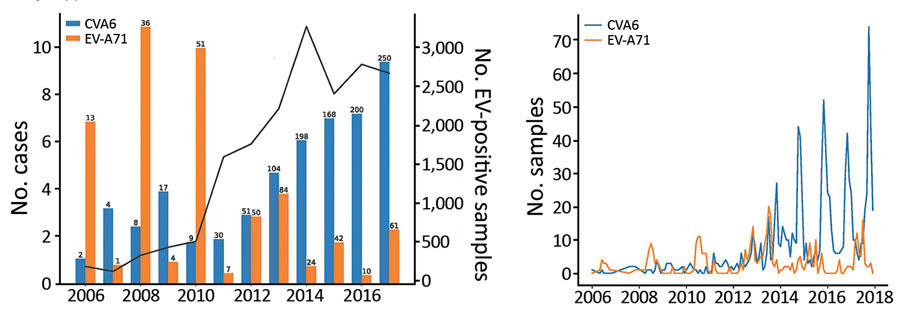Volume 27, Number 9—September 2021
Synopsis
Seroprevalence and Virologic Surveillance of Enterovirus 71 and Coxsackievirus A6, United Kingdom, 2006–2017
Figure 1

Figure 1. EV-A71 and CVA6 identified in enterovirus-positive samples referred to Public Health England from laboratories throughout England, UK, by year, 2006–2017. A) Percentage of samples typed as EV-A71 and CVA6 in each referral year (total no. cases above each bar). Solid black line indicates number of samples referred for virus typing. B) Distribution of EV-A71 (n = 381) and CVA6 (n = 1,033) clinical detections in England, using monthly totals for the period 2006–2017. CVA6, coxsackievirus A6; EV, enterovirus; EV-A71, enterovirus A71.
Page created: July 15, 2021
Page updated: August 17, 2021
Page reviewed: August 17, 2021
The conclusions, findings, and opinions expressed by authors contributing to this journal do not necessarily reflect the official position of the U.S. Department of Health and Human Services, the Public Health Service, the Centers for Disease Control and Prevention, or the authors' affiliated institutions. Use of trade names is for identification only and does not imply endorsement by any of the groups named above.